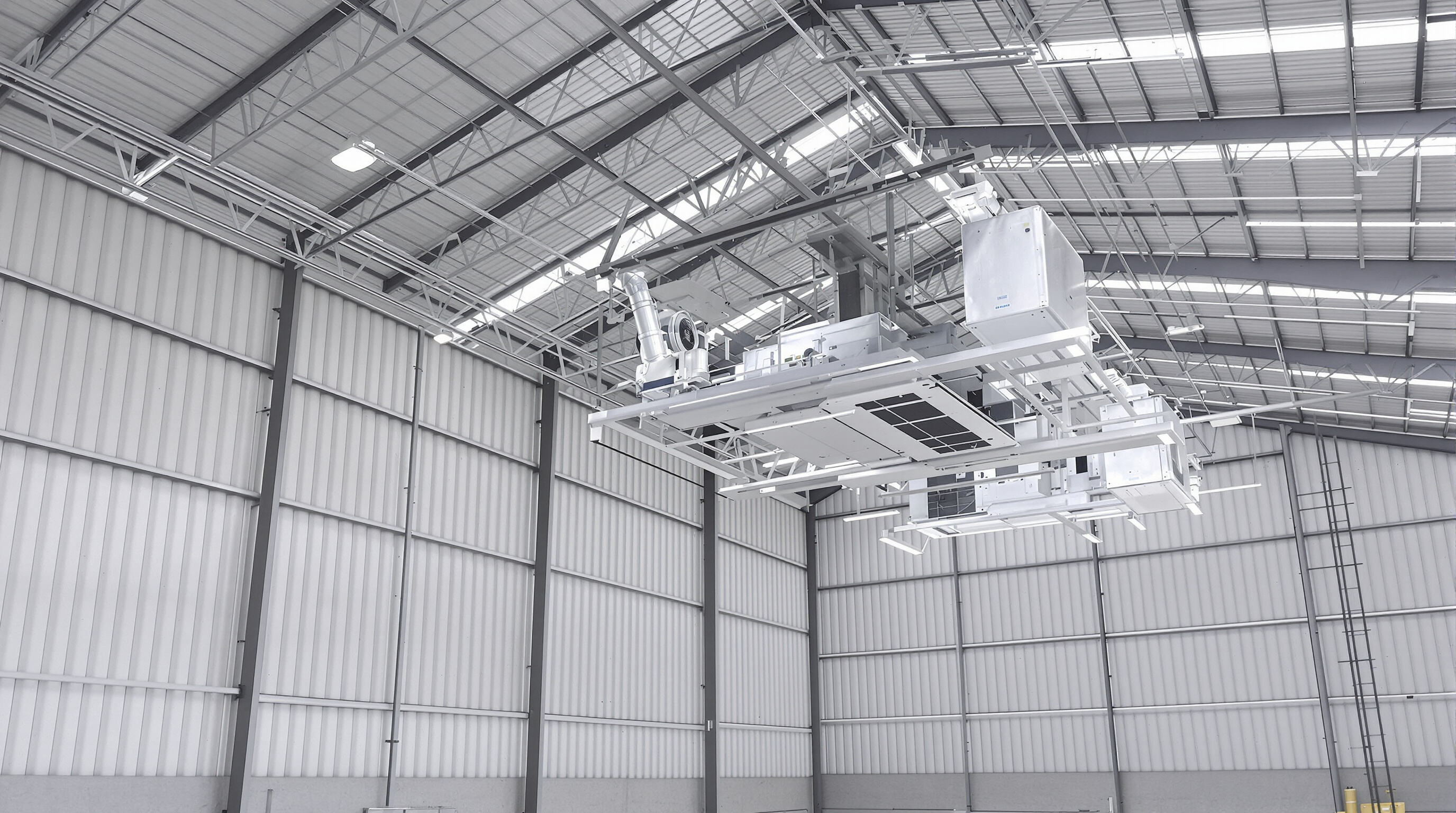Lower Construction Costs and Faster Build Times
How Prefabricated Warehouse Construction Reduces Labor and On-Site Expenses
Factory built warehouses actually save companies money because they're made with much greater precision than traditional methods. The controlled environment where these structures are manufactured means no waiting around for bad weather to pass, which alone cuts down on wasted materials somewhere around 18 percent according to some reports from last year. When it comes time to put everything together at the actual site, standardized parts make things go smoother too. Most projects end up needing anywhere between 200 to 300 fewer man hours overall. And interestingly enough, construction firms have found that they need about thirty percent less skilled labor when working with prefabs. That translates into real savings on payroll costs, something many businesses are looking for these days as budgets get tighter across the board.
Speed of Assembly: Cutting Project Timelines by Up to 40%
Prefabricated warehouses have this great modular design that lets workers get started on building components while the site is still being prepped. The result? Construction schedules shrink dramatically compared to traditional methods. Instead of waiting 12 to maybe 18 months for completion, most projects wrap up in around 6 to 9 months instead. On average, industrial teams manage to put together anywhere between 1,000 and 5,000 square feet each workday. Some industry reports indicate that about two thirds of warehouse developers finish their prefab structures roughly three weeks ahead of schedule when compared to standard construction approaches. This speed advantage makes a real difference in getting operations up and running sooner.
Case Study: Rapid Deployment Reducing Financial Overheads
A logistics company opened its 80,000 sq ft prefabricated warehouse 14 weeks ahead of schedule, avoiding $420,000 in carrying costs. The early completion eliminated three months of leased storage fees and generated $740,000 in early operational revenue (Ponemon 2023), demonstrating how accelerated timelines translate directly into financial gains.
Industry Data on Cost and Time Savings in Prefab vs. Traditional Builds
| Metric | Prefabricated Warehouse | Traditional Warehouse |
|---|---|---|
| Average build duration | 4.5 months | 9.1 months |
| Labor cost per sq ft | $16–$22 | $28–$35 |
| Material waste | 8–12% | 19–27% |
Analysis of 142 projects shows prefabricated warehouses deliver 18–32% lower total construction costs, with savings of $11–$18 per sq ft. For mid-sized facilities, these reductions compound to $540,000–$920,000 over a decade.
Energy Efficiency and Reduced Utility Expenses

Advanced Insulation, LED Lighting, and Efficient HVAC Systems in Prefabricated Warehouses
Prefabricated warehouses today come packed with systems that really boost energy savings. The triple layer insulation helps prevent those annoying heat losses through walls, and the motion sensors on LED lights cut down power consumption quite a bit actually around half what old fashioned lighting would use. When it comes to heating and cooling, factory built HVAC systems just work better because they're calibrated right from production. These units with their variable speed compressors run anywhere between 20 to 30 percent more efficiently than what gets installed onsite later. Some recent tests in 2024 back this up, showing these factory systems also fix those pesky air leaks that plague regular building methods.
Real-World Performance: Up to 30% Lower Energy Bills in Prefab Facilities
Operational data indicates prefabricated warehouses achieve 27–32% lower annual energy costs than traditionally built counterparts. A 2023 logistics sector analysis revealed that smart climate zoning reduced HVAC runtime by 41% without sacrificing temperature control, enhancing both comfort and efficiency.
Long-Term Utility Savings Enhancing Operational Cost-Efficiency
Precision engineering and durable materials ensure long-term savings:
- Insulation retains >90% effectiveness for 15+ years (vs. 8–12 years in standard builds)
- LEDs last up to 100,000 hours, reducing relamping labor by 83%
- Predictive maintenance systems cut HVAC repair costs by 60% over ten years
These efficiencies accumulate, making prefab facilities increasingly cost-effective over time.
Sustainability Incentives and Regulatory Compliance Benefits
Governments offer tax credits covering 10–30% of construction costs for energy-efficient warehouses. Compliance with stringent energy efficiency regulations also future-proofs operations against tightening environmental mandates. Six states now require solar-ready roofing for warehouses over 50,000 sq ft–a feature easily integrated into prefab designs during manufacturing.
Durability and Lower Maintenance Requirements
High-strength materials and factory-controlled quality ensuring longevity
Prefabricated warehouse structures typically feature heavy duty steel frames combined with reinforced concrete elements. These components get manufactured in controlled factory environments where automated welding systems and robotic arms handle most of the assembly work. The result? A remarkable improvement in quality standards - our industry research shows defect rates for critical load bearing parts drop to around half a percent compared to nearly 4.2% when buildings are constructed directly at the site according to Warehouse Engineering Reports from last year. Regular inspections during production help prevent rust issues down the road while maintaining strong structural performance throughout each module's lifespan. This kind of precision makes prefabs increasingly attractive for businesses looking for reliable long term storage solutions.
Reduced repair costs over a 10-year lifecycle
Galvanized steel coatings and UV-resistant cladding reduce annual maintenance expenses by 18–22%. A 2024 lifecycle analysis found that prefab facilities incur an average of $12,800 in repairs over ten years–40% less than traditional warehouses. The modular design supports targeted replacements without system-wide disruptions, cutting upgrade downtime by 33%.
Addressing the myth: Are prefabricated warehouses less durable?
Many people still think prefabs aren't as strong as traditional buildings, but actually around 98% of them hit or beat the ASTM A913 standards when it comes to handling earthquakes and storms. Tests have shown those steel panels can take on winds blowing at 150 miles per hour and hold up under snow weighing 40 pounds per square foot. That kind of strength matches what we see in buildings constructed on site. Most prefab warehouses last well over three decades if properly maintained through regular checkups. So contrary to what some might believe, going prefab doesn't mean sacrificing quality or long term reliability.
Scalability and Adaptability for Future-Proof Savings
Modular Design Enables Easy Expansion Without Costly Reconstruction
Prefabricated warehouses use interlocking modular components, allowing businesses to expand floor space by 20–50% without demolition or foundation work. This bolt-on scalability reduces expansion costs by 35–60% compared to traditional methods. Operators can order pre-engineered bays as needs evolve, supported by standardized panelized systems that simplify integration.
Case Study: Scaling Warehouse Capacity by 50% Within Six Months
A third-party logistics provider expanded its cold storage capacity by adding 18 temperature-controlled modular bays alongside its existing structure. The project reached full operation in 26 weeks–38% faster than conventional construction–enabling the company to fulfill a critical vaccine distribution contract and preserve $1.2 million in potential revenue.
Flexible Layouts Supporting Evolving Logistics and Storage Needs
Column-free spans of 90–150 feet allow seamless reconfiguration of storage zones, workflows, and automation systems. This adaptability improves space utilization by 27% over ten years, enabling operators to pivot quickly to cross-docking, robotics, or specialized inventory requirements without costly renovations.
Lifecycle Cost Comparison: Prefab vs. Traditional Warehouses
Upfront vs. Long-Term Costs: Why Prefab Wins on Total Cost of Ownership
Although traditional warehouses may appear cheaper initially, prefabricated solutions offer 23% lower total lifecycle costs (2023 industry analysis). Bulk material purchasing and precision engineering reduce upfront expenses by 15–30%, while standardized designs lower architectural fees. Over 20 years, these advantages are amplified by 30% lower energy bills and 42% fewer repairs.
Hidden Expenses in Traditional Construction: Delays, Weather Risks, and Change Orders
Traditional builds face an average 18% budget overrun due to cascading issues:
- Weather delays cost $7,500–$15,000 daily in idle labor and equipment
- Last-minute design changes are three times more expensive than prefab modifications
- Extended timelines delay revenue generation by 6–12 months
A 2022 study of 150 warehouses found traditional projects exceeded initial budgets by 27%, compared to just 9% for prefab builds.
Total Lifecycle Analysis Favoring Prefabricated Warehouse Solutions
When evaluated across key metrics, prefabricated warehouses consistently outperform traditional alternatives:
| Cost Factor | Prefab Advantage | Timeframe |
|---|---|---|
| Construction | 25% lower | Year 0 |
| Energy Consumption | 34% savings | Years 1-20 |
| Expansion/Modification | 60% faster | Ongoing |
| Decommissioning | 40% recyclable | EOL |
This sustained operational efficiency results in a 19% higher net present value over two decades, solidifying prefabrication as the smarter long-term investment.
FAQ Section
What is the main advantage of prefabricated warehouse construction?
Prefabricated warehouse construction offers the main advantage of significantly reduced construction time and costs. It allows for faster assembly due to modular designs and less labor requirement, translating into savings.
How do prefabricated warehouses contribute to energy efficiency?
They contribute through advanced insulation, LED lighting, and efficient HVAC systems that reduce energy consumption considerably, leading to lower utility bills and carbon footprint.
Are prefabricated warehouses as durable as traditional buildings?
Yes, prefabricated warehouses are very durable. They meet or exceed industry standards for structural integrity and can handle extreme weather conditions effectively.
Can prefabricated warehouses be expanded easily?
Yes, they are designed for scalability. Modular components allow easy expansion of floor space without the need for significant reconstruction work, minimizing costs and downtime.


